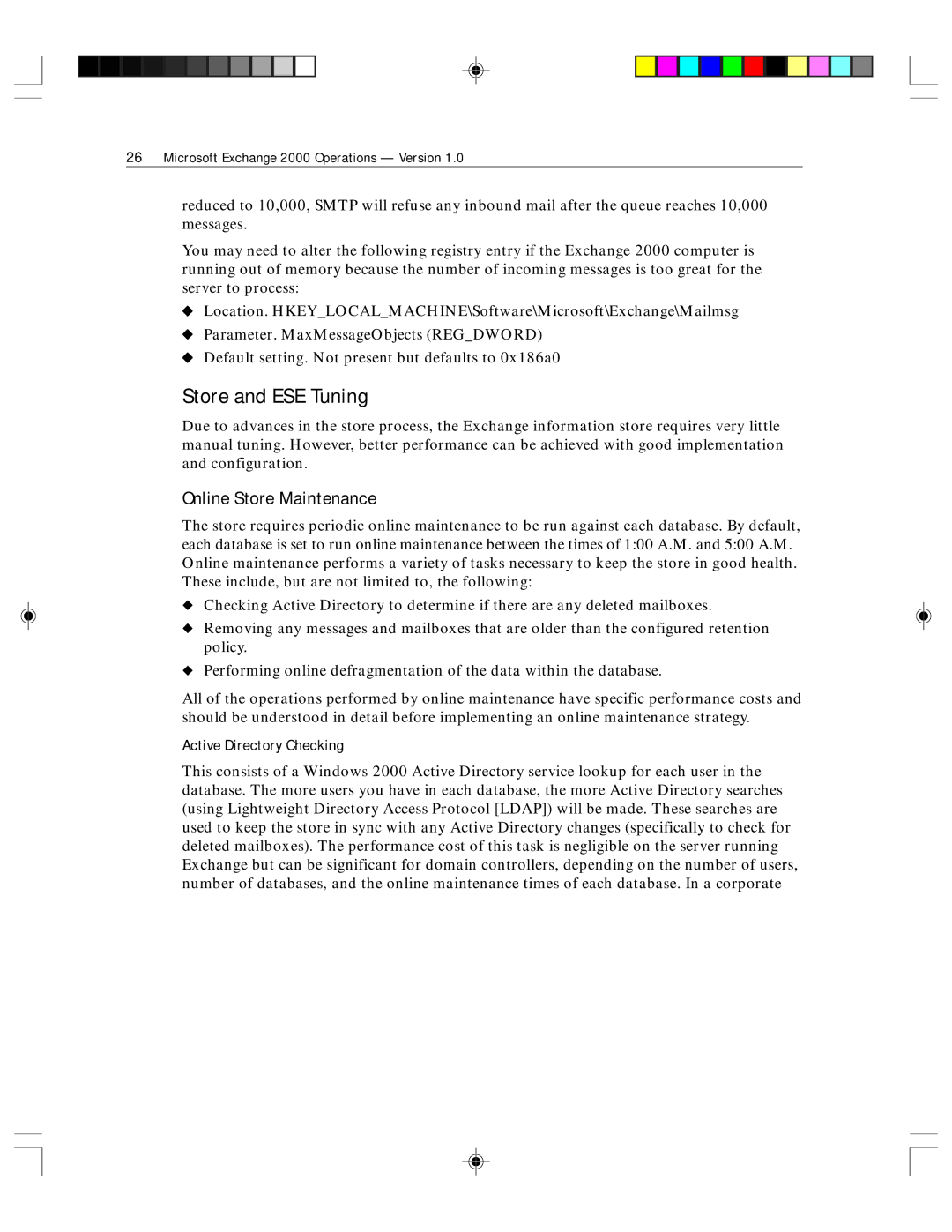
26Microsoft Exchange 2000 Operations — Version 1.0
reduced to 10,000, SMTP will refuse any inbound mail after the queue reaches 10,000 messages.
You may need to alter the following registry entry if the Exchange 2000 computer is running out of memory because the number of incoming messages is too great for the server to process:
◆Location. HKEY_LOCAL_MACHINE\Software\Microsoft\Exchange\Mailmsg
◆Parameter. MaxMessageObjects (REG_DWORD)
◆Default setting. Not present but defaults to 0x186a0
Store and ESE Tuning
Due to advances in the store process, the Exchange information store requires very little manual tuning. However, better performance can be achieved with good implementation and configuration.
Online Store Maintenance
The store requires periodic online maintenance to be run against each database. By default, each database is set to run online maintenance between the times of 1:00 A.M. and 5:00 A.M. Online maintenance performs a variety of tasks necessary to keep the store in good health. These include, but are not limited to, the following:
◆Checking Active Directory to determine if there are any deleted mailboxes.
◆Removing any messages and mailboxes that are older than the configured retention policy.
◆Performing online defragmentation of the data within the database.
All of the operations performed by online maintenance have specific performance costs and should be understood in detail before implementing an online maintenance strategy.
Active Directory Checking
This consists of a Windows 2000 Active Directory service lookup for each user in the database. The more users you have in each database, the more Active Directory searches (using Lightweight Directory Access Protocol [LDAP]) will be made. These searches are used to keep the store in sync with any Active Directory changes (specifically to check for deleted mailboxes). The performance cost of this task is negligible on the server running Exchange but can be significant for domain controllers, depending on the number of users, number of databases, and the online maintenance times of each database. In a corporate
